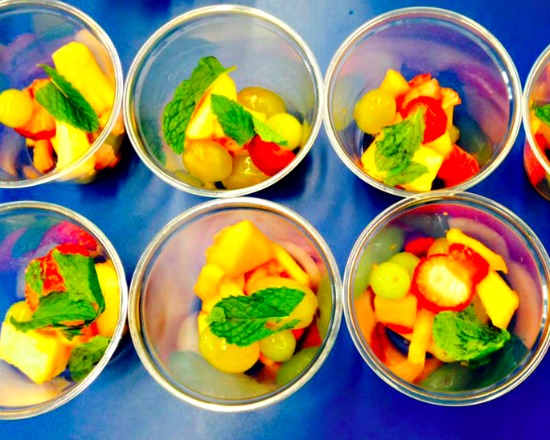
My school lunch experience was typical. Chicken nuggets were served with a side of French fries, some chocolate milk, and something that resembled string beans that had been dehydrated and then boiled at the last minute. The meal maintained an impressive balance between fried and mushy.
Thanks to a new cookbook, kids will no longer need to dread school lunch. Last month, a team in Vermont – the farm-to-school capital of the world – released New School Cuisine: Nutritional and Seasonal Recipes for School Cooks by School Cooks.
The cookbook is the first of its kind, and it has set the bar high. It contains 78 kid-tested recipes for soups, salads, fruits, vegetables, grains, meat and meat alternatives. The recipes are playful yet sophisticated, and they add colorful, local, seasonal items to the school lunch menu.
Designing a school meal is not easy. Under National School Lunch Program standards, schools must follow rigid nutrient requirements in order to receive government reimbursement. Each of the following five food groups must be served in a meal: meat (or meat alternative), grain, vegetable, fruit, and milk. To make things more complicated, calorie maximums differ by age, vegetables must vary in color throughout the week, and schools are given next to no money to make it all happen.
Chef Bill Telepan, executive chef at Telepan, Telepan Local, and school food organization Wellness in the Schools, understands the challenges that come with feeding so many children in a school setting. “It’s a million kids for a dollar – it’s hard,” he said in a conversation with WNYC radio host Leonard Lopate in November.
New School Cuisine takes some of the pressure off of school chefs by providing all of the nutrition and nutrient conversion information they would need to craft a meal. A recipe for “Mac & Trees,” for example, provides fifty 353-calorie servings, and each contains 1.5 ounces of meat alternate (cheese), 1 ounce of grain (whole-wheat macaroni), and 1/8 cup of a dark green vegetable (broccoli).
The cookbook also provides tips for a successful farm-to-school program, ways to make local food affordable, and a guide to eating seasonally.
New School Cuisine: Nutritional and Seasonal Recipes for School Cooks by School Cooks is free online and will be available in print soon.



